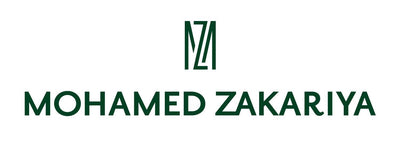STYLES

Hilyes
Hilye is the Turkish form of the Arabic word hilya, seems to have been a species of oral literature neither prose nor poetry. The style in Arabic is unique and recognizable. The hilye has several meanings, including physiognomy, natural disposition, likeness, depiction, characterization, and description. But these dictionary definitions only begin to convey the real meaning of the hilye, which embodies the Prophet’s moral, behavioral, and spiritual qualities as well as physical appearance. Like most Arabic words, hilya carries multiple overtones, making it difficult to translate. It has connotations of ornament, beauty, finery, and embellishment, along with the classic narrative description. There are many hilye texts, which give the reader a concise description of what the Prophet, as a person, was like. The literature also has hilyes of such Biblical figures as Adam, Noah, Abraham. Moses, and Jesus.
The most famous hilye texts are those that characterize the Prophet Muhammad. In Turkish, they are called Hilye-i Saadet (the Hilye of Felicity), Hilye-i Sherif (the Noble Hilye), and Hilye-i Nebevi (the Prophetic Hilye). The first hilyes to be produced as an art form were, as far as we can tell, by the great Ottoman calligrapher Hafiz Osman Efendi (“the Second Sheikh,” 1644-98 AD). In the art of calligraphy, this form has been very significant, most often written in Sulus and Nesih scripts, both small and large versions. The work is also done in Nestalik script; the first to do so was Mehmed Es’ad Yesari Efendi (d. 1789 AD).
Besmeles
Besmele is the more easily pronounced Turkish spelling of the Basmala; that is, the formulation “In the name of God, Whose mercy is comprehensive, Whose mercy is specific.”
The Besmele occurs 114 times in the Quran, 113 times as the beginning of a Sura. People have come to see its role as prefacing a beginning. The late Turkish Quran commentator Hamdi Yazir gives 65 pages to the Besmele in his monumental commentary in the original Ottoman. He suggests that the essential meanings of the Quran can be found in it.
Although a challenge to write, the Besmele is an ever-popular subject for both amateur and professional calligraphers.
Ayets
Ayet, the Turkish spelling of the Arabic Aya, refers to a verse of the Quran. Scholars and commentators do not always agree on the number of Ayets in the Quran, but the text is unchangeable except in regard to punctuation, pronunciation, and interpretation.
Two spelling systems exist for Quranic material: the earlier Uthmanic system, which is somewhat abbreviated, and the full spelling system, used for centuries and favored by the great masters of the Ottoman school. Unless specifically requested otherwise, my own choice is the full spelling system, as the earlier system provides calligraphic difficulties and makes the use of modern scripts somewhat problematical.
Kitas
Kitas are small calligraphic works, generally horizontal or rectangular in format and generally using two scripts: one large, Sulus, and one small, Nesih. To allow for the arrangement of longer lines of Sulus with shorter lines of Nesih, the calligrapher leaves small rectangular or triangular spaces called koltuks, Turkish for armpit. The koltuks are generally illuminated, as are the borders of the kita. Smaller kitas may be written in a single script, Sulus or Nesih. Kitas can also be in Talik script with horizontal or diagonal text.
Levhas
Levhas are calligraphic panels for large (jeli) scripts or works comprised of many lines of writing. The term came from the fact that these panels were originally intended to be hung on walls. The formats of most calligraphic works have been developed over the centuries to give maximum impact to the finished artwork and to showcase the various qualities of the calligraphy, illumination, and color. In my own work, I try to achieve novel and nontraditional effects by using unfamiliar color schemes and styles of illumination.
